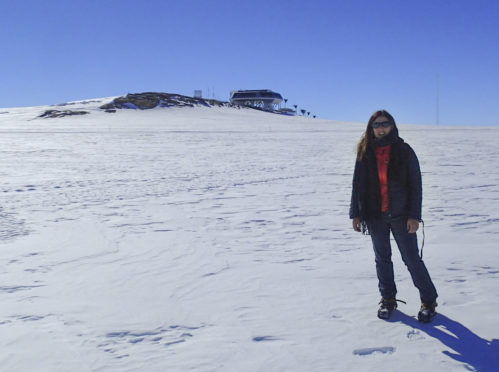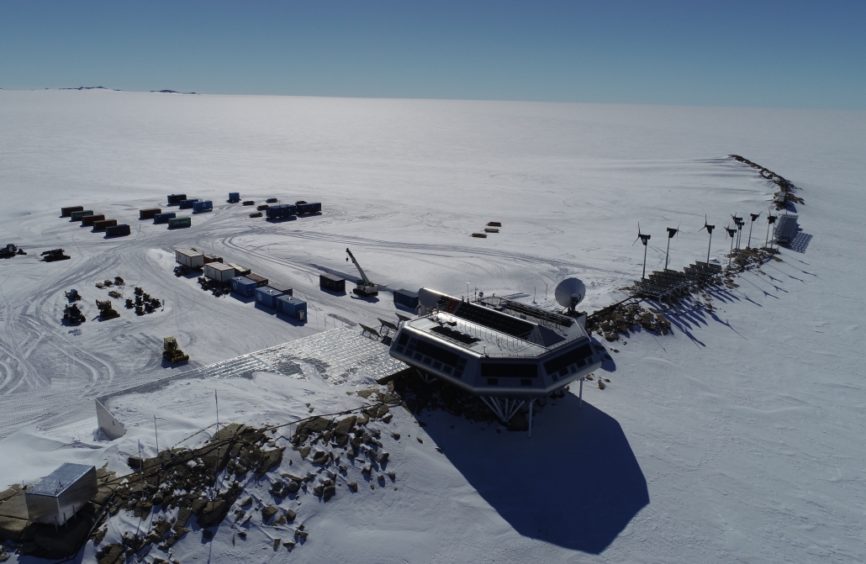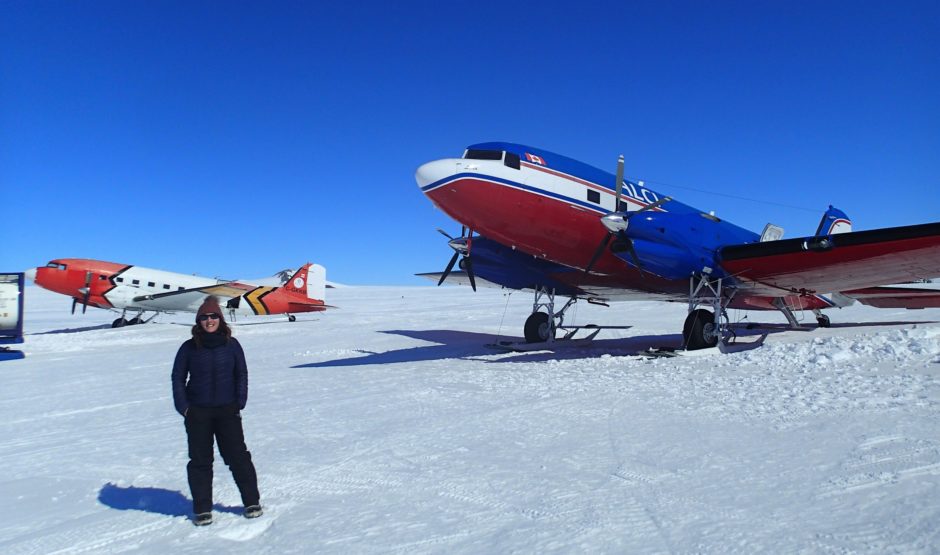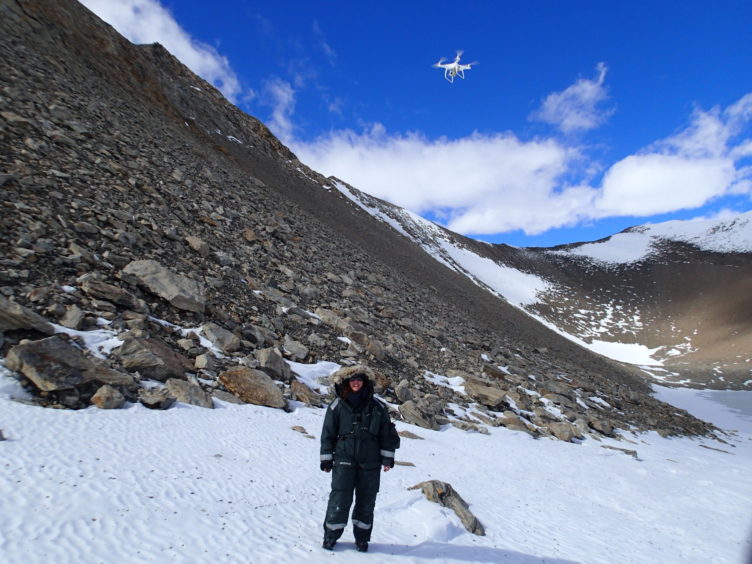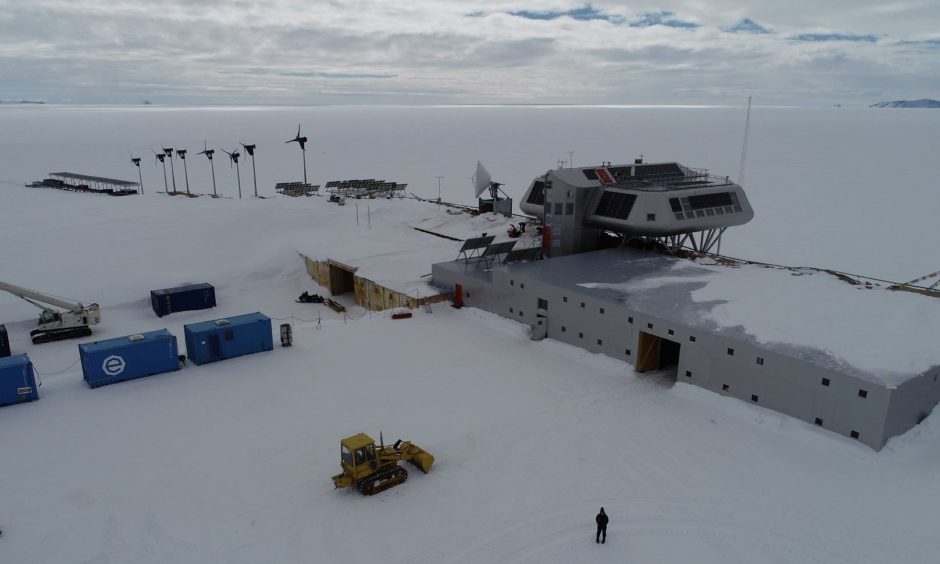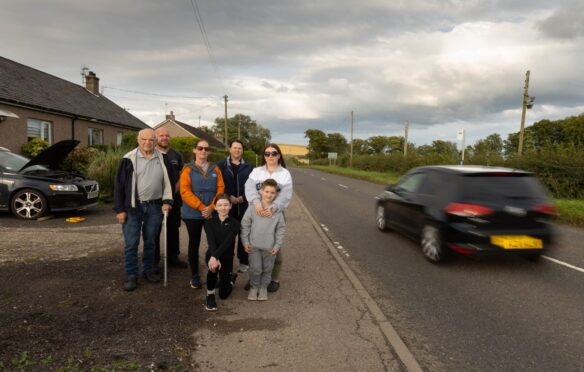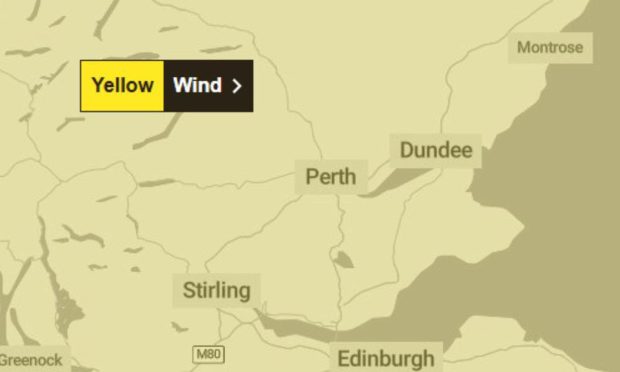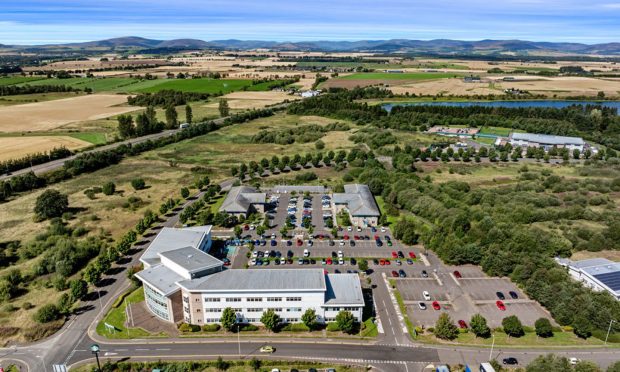A high-tech polar research station was the festive season base for a leading Angus scientist on a prestigious research fellowship charting the movement of mountains in one of the world’s most remote locations.
Dr Kate Winter is spending around two months at the Princess Elisabeth research facility, built on a granite ridge in east Antarctica as the world’s only zero-emission polar station.
It is the latest stage of a career inspired by a school trip to Iceland which is earning the 28-year-old a fast-growing reputation as one of the best in her field.
For the former Arbroath High School pupil, now a top academic at Newcastle’s Northumbria University, it is a return to what could loosely be called familiar ground after she secured the prestigious €150,000 Baillet Latour Antarctica Fellowship late last year.
The award followed work which saw Dr Winter make international headlines when she discovered three huge unknown canyons and mountain ranges buried near the South Pole – the largest the size of Manhattan Island.
She is only the second female scientist to be awarded the fellowship, and while family and friends were settling down to traditional festive fare at home in Arbroath, Kate was getting to grips with a skidoo to skim across the polar cap and undergoing vital crevasse safety training in the dangerous environment.
Despite being able to sit out under clear blue skies to enjoy Christmas dinner at a unique table carved into the Antarctic snow, it is a hostile location with the station battered by winds of almost 200 miles per hour and the mercury plummeting to around minus 40 degrees Celsius.
Kate is one of four scientists at the base, alongside with her field assistant James Linighan and two Turkish geologists.
The research station is a hive of activity with work currently under way to expand its capabilities, including checks on the turbines which harness the icy winds to generate most of the electricity there.
She said: “James and I have been scanning the mountains that stick up above the ice, called nunataks, with a drone.
“When we come back next year, we will do the same tests, to see if the rocks on the mountain have moved over the space of a year.
“Over many years, these rocks will roll and fall onto the ice, where glaciers will transport them to the sea.
“We have already collected some rock samples from nearby mountains and from the ice sheet, so that we can see what’s inside the rocks when we get back to the laboratory at Northumbria University.
“That will also tell us if these rocks can help to feed plankton in the Southern Ocean.”
She added: “One geologist wants to date the rocks on the mountains to see if the East Antarctic ice sheet was thicker in the past, and the other is searching for meterorites.
“Antarctica is a great place to find meteorites because their dark, shiny form stands out on the blue ice and white snow.”
She is due to return to the UK in February, before returning to Antarctica again around 12 months from now.
